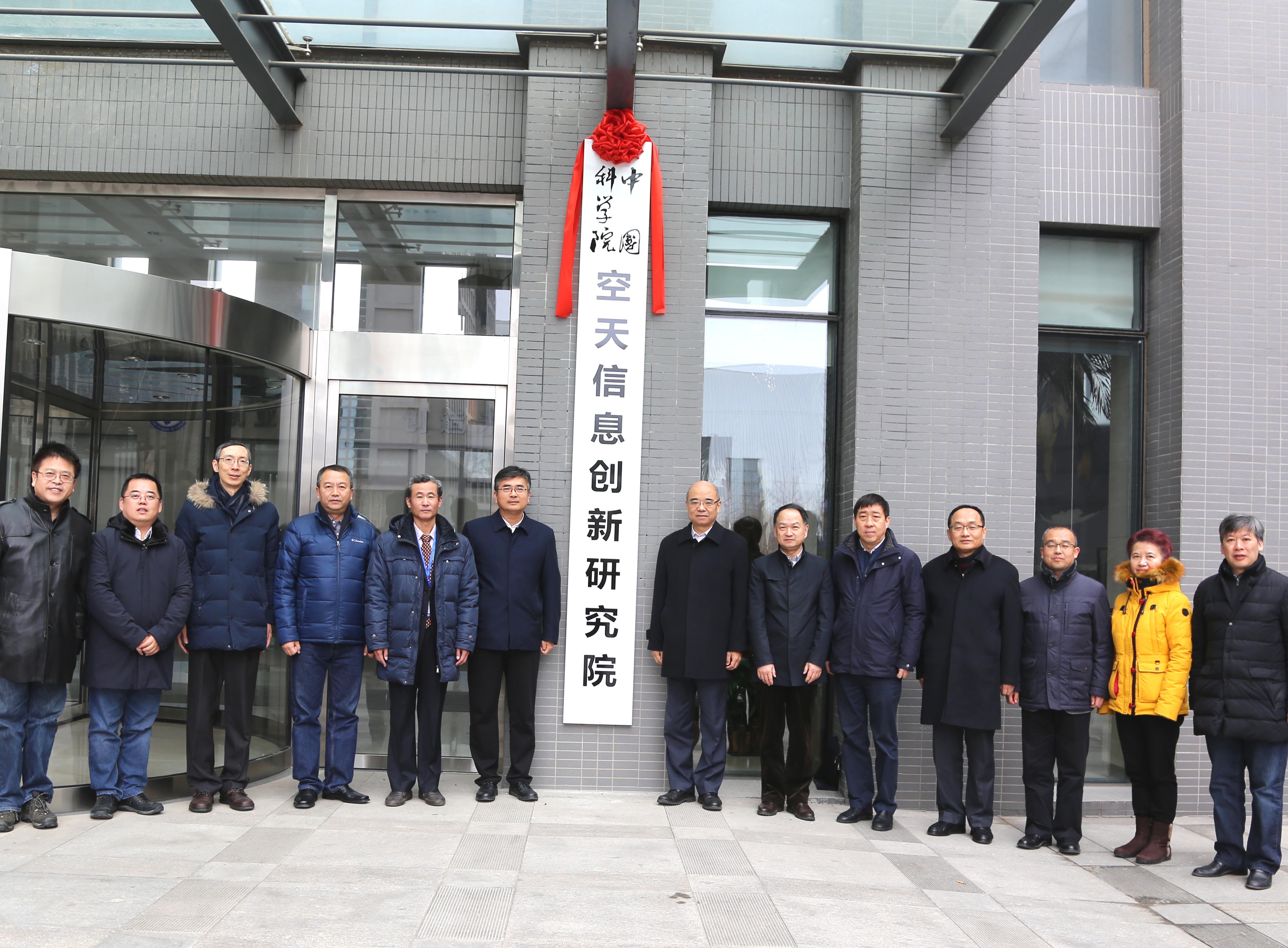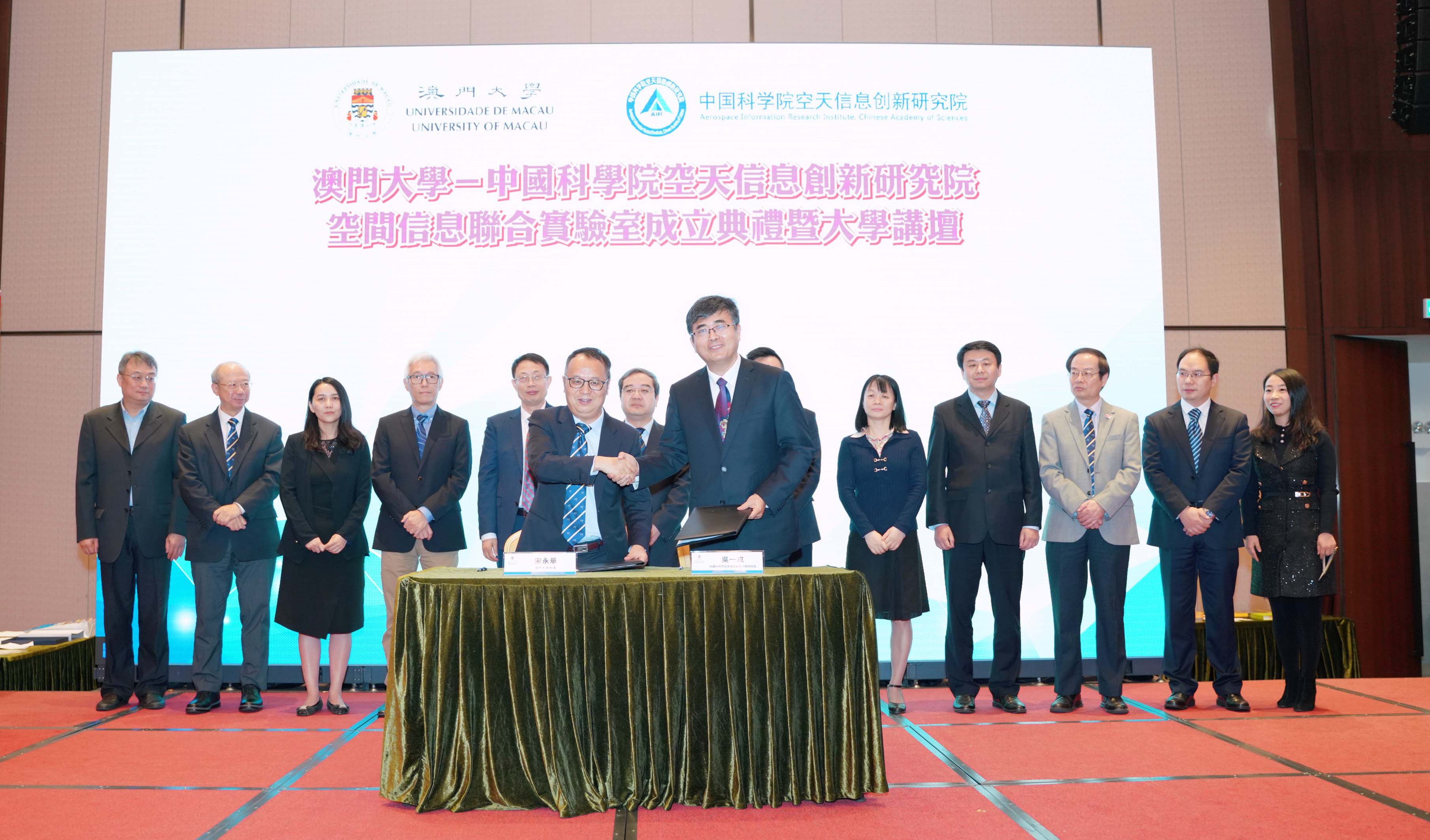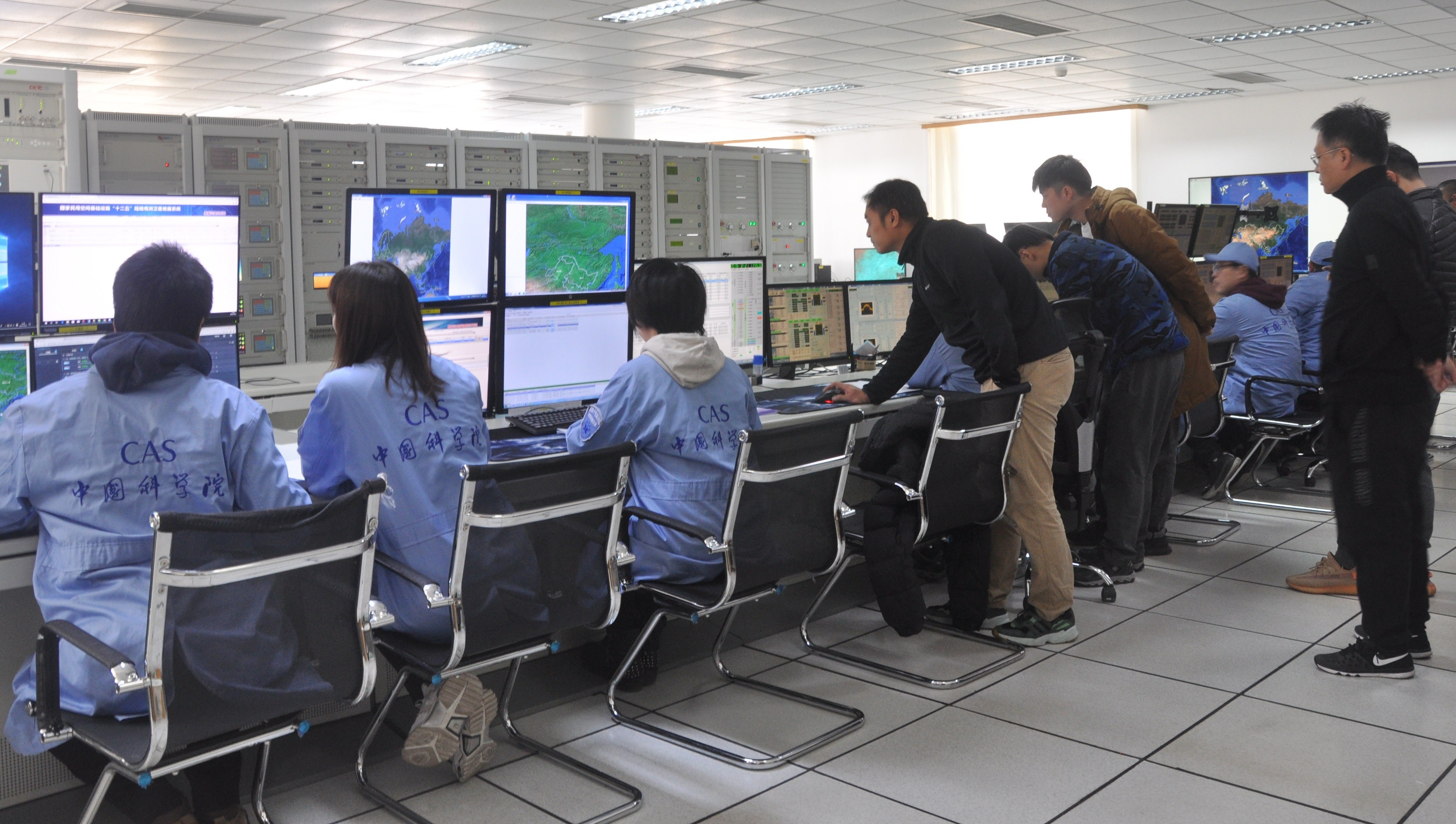-
 Council of AIR Established
Council of AIR EstablishedThe Inaugural Meeting and the First Plenary Meeting of the First Council of Aerospace Information Research Institute (AIR) under the Chinese Academy of Sciences (CAS) was held on January 7, 2020 in Beijing. XIANGLI Bin, Vice President of CAS and Director of AIR Council, together with WU Yirong, Director-General of AIR and Deputy Director of AIR Council, jointly unveiled the nameplate of AIR. YU Yingjie, Director of the Bureau of Major R&D Programs under CAS announced the approval document on the establishment of AIR. The unveiling ceremony was presided over by CAI Rong, Deputy Director of AIR.
January 17, 2020 -
 AIR, University of Macau Establish Joint Lab of Aerospace Information
AIR, University of Macau Establish Joint Lab of Aerospace InformationThe Joint Laboratory of Aerospace Information was established by the Aerospace Information Research Institute (AIR) under the Chinese Academy of Sciences (CAS) together with the University of Macau (UM) on January 9 in Macao. WU Yirong, Director General of AIR, and Song Yonghua, rector of UM, signed a cooperation agreement on behalf of both institutes.
January 13, 2020 -
 AIR Research Results Win 2019 National Science and Technology Award
AIR Research Results Win 2019 National Science and Technology AwardAt the annual ceremony of the National Science and Technology Award held on January 10, 2020 in Beijing, the Aerospace Information Research Institute (AIR) under the Chinese Academy of Sciences (CAS) won three prizes for the National Science and Technology Progress Award in 2019,including a first and a second prize as the first research unit, and a second prize as the second research unit.
January 12, 2020 -
 China Remote Sensing Satellite Ground Station Confirms Data Reception from New China-Brazil Satellite
China Remote Sensing Satellite Ground Station Confirms Data Reception from New China-Brazil SatelliteAt 11:43 on December 21, the Miyun Station of the China Remote Sensing Satellite Ground Station (RSGS), a mega research facility housed by the Aerospace Information Research Institute (AIR) successfully tracked and well received the downlink data from the newly launched China-Brazil Earth Resource Satellite (CBERS)-04A.
December 23, 2019 -
 4th Digital Belt and Road Conference Held in Shenzhen
4th Digital Belt and Road Conference Held in ShenzhenThe 4th Digital Belt and Road Conference, hosted by the “Digital Belt and Road” (DBAR) Program, co-hosted by Big Earth Data Science Engineering Project (CASEarth) and organized by CAS Shenzhen Institutes of Advanced Technology, convened in Shenzhen on December 17, 2019. The conference, themed “Digital Belt and Road Facilitates Sustainable Development”, aimed to promote communication and cooperation between experts and scholars from all around the world on the issues related to selection and demonstration of Sustainable Development Goals (SDGs) most relevant to “Belt and Road” region , mechanisms to aggregate and share Big Earth Data within the “Belt and Road” countries, enhance the capability of scientific discovery and decision-making related to Big Earth Data, and promotion of the sustainable development process by using Big Earth Data.
December 18, 2019 -
 Prof. ZHANG Bing Elevated to IEEE Fellow
Prof. ZHANG Bing Elevated to IEEE FellowAccording to a recent announcement released by the Institute of Electrical and Electronics Engineers (IEEE), a total of 282 people across the world have been elevated to IEEE Fellow for the Class of 2020. Prof. ZHANG Bing from the Aerospace Information Research Institute (AIR) under the Chinese Academy of Sciences (CAS) has been elected as a Fellow for his contributions to the research of hyperspectral image acquisition and processing.
December 02, 2019


